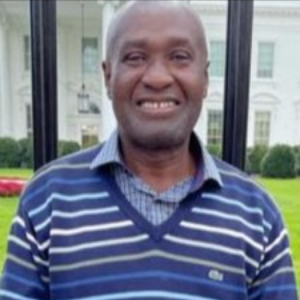Title : The descriptive epidemiology of adverse events following two doses of mRNA COVID-19 vaccination in Curacao
Abstract:
Background: Globally, over 13 billion COVID-19 vaccine doses have been administered, which increases the risk of vaccine-related safety concerns. BNT162b2 and mRNA-1273 COVID-19 vaccines have been used for mass vaccinations in Curaçao, but information on adverse events (AEs) in this population is unavailable. This study describes the characteristics of vaccines that incurred AEs, explores the associations between AEs by vaccine and doses, and estimates the rate of AEs.
Methods: In this retrospective cohort study, data for persons aged 5 years and older who received at least one dose of COVID-19 vaccine at 78 vaccination centres in Curacao between February 21, 2021, and April 5, 2023, were analysed. AE were reported by vaccinees and categorized according to the Brighton’s collaboration criteria. Wilson 95% confidence intervals (CIs) were calculated for rates of AEs per 100,000 persons vaccinated. Descriptive analysis included frequencies and proportions to describe patterns in rates by age, sex, and number of vaccines.
Results: During the study period, 260,670 doses of COVID-19 mRNA vaccines (59.7% BNT162b2, 40.3% mRNA-1273) were administered to 150,000 individuals (mean age of vaccinees 51 years, 55% females). The vaccines differed significantly in frequency distribution of vaccinees by age, age groups, sex, AEs, and prior COVID-19 infection. Females were more likely to be vaccinated compared to males. Of the 209,720 persons who received two doses of COVID-19 mRNA vaccine, a total of 84 AE reports related to COVID-19 vaccine were received for the study period (overall rate of 40.1 per 100000 persons (95% CI 32.4-49.6)). BNT162b2vaccinees (58.3 per 100000 persons, 95% CI 45.4-74.9)) incurred substantially significant higher AE rate than mRNA-1273 vaccinees (21.9 per 100000 persons, 95% CI 14.6-32.8). There were statistically significant differences in AE rates between males and females. AE rates also varied by the number of doses and by mRNA vaccine group. In addition, overall and by mRNA vaccine group, the rates for AE defined as systemic were higher than those for AE defined as local. By age group, the highest rates were among age group 45-54 years (158 per 100000 persons vaccinated for BNT162b2 vaccine compared with (62 per 100000 persons vaccinated for mRNA-1273 in the same age group (Figure 1). Male BNT162b2 vaccinees has the highest AE rates in the age group 15-24 years (48 per 100000 persons vaccinated) and higher rates than male mRNA-1273 vaccinees in age groups 25-34, 35-44, and 55-64 years. Occurrence of AEs was strongly associated with mRNA vaccine group, sex, number of doses, but not with age, age group, and prior COVID-19 infection. mRNA-1273 was associated with a significantly lower risk of AEs.
Conclusions: AE reporting varied by age, sex, and vaccine used as well as the number of doses. Female predominance of higher rates may be due to biased reporting, although females had higher number of vaccinations administered than males. Future studies should allow for follow up and longer-term reporting of AEs.



